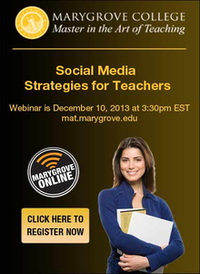 As an aspiring educator, I knew exactly what kind of teacher I would be: I would facilitate dynamic discussions; the students would not only read all of the assigned texts, they would devour them. Sure, teaching would be work, but I mostly saw myself as a facilitator—someone who would ask all the right questions and look on as my students marched towards intellectual victory.
As an aspiring educator, I knew exactly what kind of teacher I would be: I would facilitate dynamic discussions; the students would not only read all of the assigned texts, they would devour them. Sure, teaching would be work, but I mostly saw myself as a facilitator—someone who would ask all the right questions and look on as my students marched towards intellectual victory.
You can probably see where this is going. Once I was handed the keys to the classroom, I was surprised when things didn’t magically fall into place like they were supposed to. (Does this sound familiar?)
It wasn’t that things were disastrous, but they just weren’t the way I imagined. Why weren’t students talking? Why weren’t they as excited as I was about what we were reading? Why weren’t they making connections and thinking critically about what they read?
It wasn’t until later that I discovered that I (not the students) was the reason our discussions fell flat. To spark discussions and critical inquiry, I asked my students a lot of questions. Questions are good, but most of the questions I asked students were what we would call nonessential questions.
To give you a clearer sense of what I mean by essential and nonessential questions consider the following examples from Jay McTighe and Grant Wiggins’ book, Essential Questions: Opening Doors to Student Understanding.
Essential question: “How do the arts shape, as well as reflect, culture?
Nonessential question: “What common artistic symbols were used by the Incas and the Mayans?”
Essential question: “Is there ever a ‘just’ war?
Nonessential question: What key event sparked World War I?”
Essential question: “What does it mean to be a ‘true’ friend?”
Nonessential question: “Who is Maggie’s best friend in the story?”
As you may have noticed, unlike nonessential questions, essential ones are timeless. Some can even be grappled with indefinitely; they are neither immediately apparent nor can they be answered with a fact or a simple yes or no response. Essential questions force us to interrogate our presuppositions, dig in, explain, defend, question and—hopefully—grow.
If you still sketchy on the difference between essential and nonessential questions, here are seven of McTighe and Wiggins’ defining characteristics of a good essential question.
A good essential question:
- Is open-ended; that is, it typically will not have a single, final, and correct answer.
- Is thought-provoking and intellectually engaging, often sparking discussion and debate.
- Calls for higher-order thinking, such as analysis, inference, evaluation, prediction. It cannot be effectively answered by recall alone.
- Points toward important, transferable ideas within (and sometimes across) disciplines.
- Raises additional questions and sparks further inquiry.
- Requires support and justification, not just an answer.
- Recurs over time; that is, the question can and should be revisited again and again.
Replies to This Discussion
-
Critical questions develop student's thinking skills, encourage them to use the questioning strategies to assess what they have learned. Wait for students to think and formulate answers, don't interrupt in between.
-
Very informative post!! Thanks for sharing!!
© 2025 Created by Steve Hargadon.
Powered by
![]()
